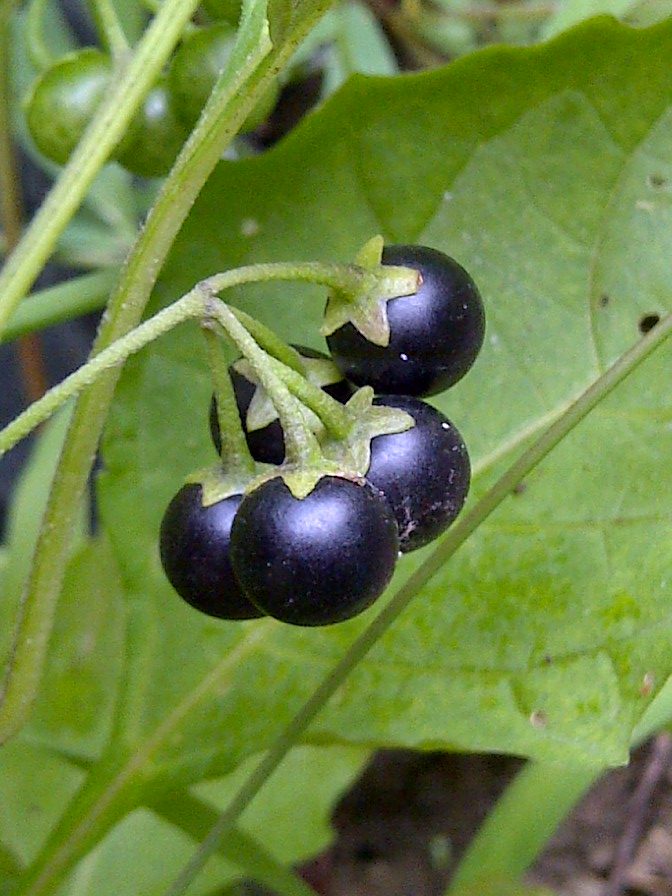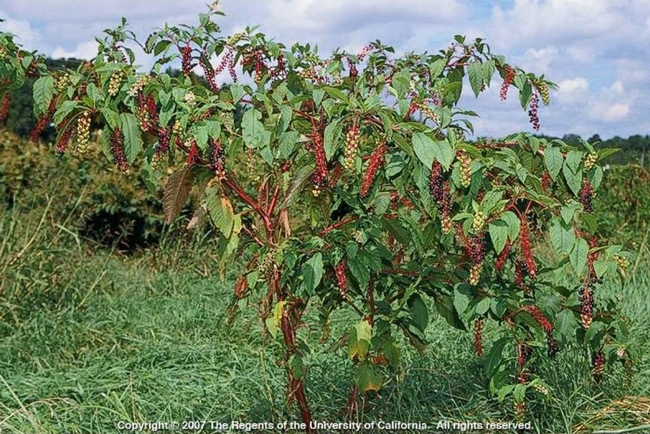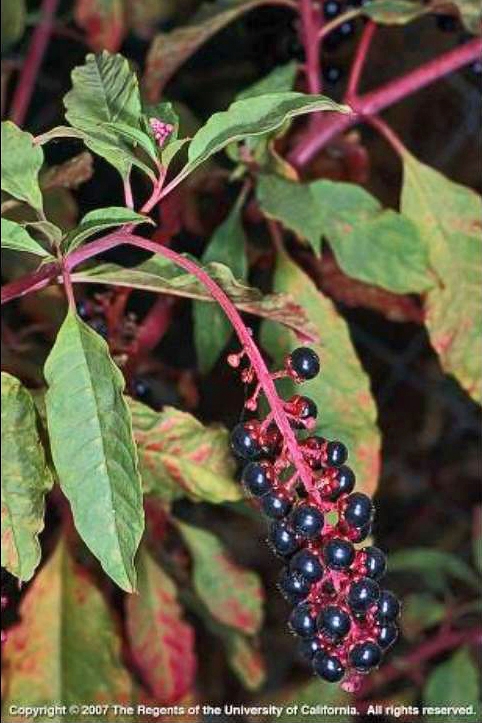As an Amazon Associate, I earn from qualifying purchases.
Weeds with purple berries include plants like pokeweed and nightshade. These plants can be toxic if ingested.
Purple-berried weeds can be both intriguing and dangerous. Pokeweed, common in North America, features clusters of purple berries and can cause severe illness if consumed. Similarly, nightshade, another weed with purple berries, is highly toxic. Gardeners and outdoor enthusiasts should recognize these plants to avoid accidental ingestion.
Proper identification is essential for safety. The vibrant berries might attract children and pets, posing a risk. Always wear gloves while handling these weeds to prevent skin irritation. By understanding and identifying these plants, you can maintain a safe environment in your garden or outdoor space.

Common Weeds With Purple Berries
Discover various common weeds with purple berries that can be found in gardens and wild areas. These vibrant berries add a splash of color, but some may be toxic.
Nightshade
Nightshade plants have small, purple berries. These berries are poisonous. The leaves and stems are also toxic. Nightshade plants can grow in gardens and fields. They have small, white or purple flowers. The berries turn from green to purple when ripe. Always wear gloves when handling nightshade.
Pokeweed
Pokeweed has large, purple berries. These berries are also toxic. The plant has thick, red stems. Pokeweed can grow over 10 feet tall. Birds eat the berries, but they are not safe for humans. The leaves are green and broad. Always remove pokeweed with care. It can spread quickly in your garden.
Identifying Characteristics
Weeds with purple berries often feature distinctive characteristics like vibrant, small clusters of berries and broad green leaves. These plants can thrive in various environments, making them easily identifiable in gardens and wild spaces.
Leaf Shape
The leaves are often broad and flat. Some leaves have jagged edges, while others are smooth. The color can be dark green or light green. Leaves may have a glossy surface. The veins are usually visible and pronounced. Some weeds have hairy leaves, adding to their distinct look.
Berry Appearance
The berries are small and round. They have a deep purple color. Some berries may look almost black. They grow in clusters on the plant. Berries can be shiny or have a matte finish. Often, the berries are juicy and may stain your fingers.
Potential Risks
Some purple berries can be toxic. Eating them can cause stomach pain. Children and pets are most at risk. Always identify the plant before touching the berries. Some berries might look safe but are not.
Weeds with purple berries can spread quickly. They can take over gardens and fields. These weeds compete with other plants for space and nutrients. They can also damage native plants. Removing them can be very hard.

Effective Management
Managing weeds with purple berries effectively requires identifying the specific species. Utilize targeted herbicides and regular maintenance to control growth.
Manual Removal
Manual removal involves pulling out weeds by hand. It’s best to do this early. Use gloves to protect your hands. Make sure to remove the entire root. This prevents the weed from growing back. Regularly check your garden for new weeds. Dispose of the weeds properly to avoid spreading.
Herbicides
Herbicides are chemicals that kill weeds. Choose one that targets the specific weed in your garden. Read the instructions carefully before use. Wear protective gear to avoid contact with the skin. Apply the herbicide directly to the weed. Avoid spraying on other plants. Use herbicides as a last resort.
Preventative Measures
Identify and remove weeds with purple berries promptly. Regularly inspect gardens and lawns to prevent their spread. Proper mulching and ground cover can also reduce weed growth.
Mulching
Mulching is a great way to prevent weeds. It blocks sunlight and stops weeds from growing. Use organic mulch like straw or wood chips. Spread it evenly around your plants. Make sure the layer is thick enough. This keeps the soil moist and cool. It also adds nutrients to the soil.
Regular Monitoring
Check your garden often. Look for weeds with purple berries. Pull them out as soon as you see them. This stops them from spreading. Use gloves to protect your hands. Dispose of the weeds properly. Do not leave them in the garden. Regular monitoring keeps your garden healthy and clean.

Safe Disposal
Properly dispose of weeds with purple berries to prevent their spread and protect local ecosystems. Use gloves and seal in a trash bag.
Composting
Composting is a great way to dispose of weeds with purple berries. The berries can be broken down into nutrient-rich compost. Ensure the compost pile is hot enough to kill seeds. This prevents the berries from sprouting again. Turn the compost regularly to maintain heat. This also speeds up the decomposition process. Avoid adding too many berries at once. Balance with other compost materials like leaves and grass clippings.
Municipal Waste
Placing weeds with purple berries in municipal waste is another safe disposal method. Use a sealed bag to prevent the spread of seeds. Check local regulations for yard waste disposal. Some areas offer special yard waste bins. These bins are collected separately and processed properly. Avoid illegal dumping to protect the environment. Proper disposal helps keep your garden and community clean.
Attracting Beneficial Wildlife
Weeds with purple berries are great for birds. They offer a rich source of food. Birds enjoy the berries, especially during fall and winter. These berries provide essential nutrients. Birds help spread the seeds. This promotes plant growth. Different bird species are attracted to these berries. This enhances biodiversity in your garden.
Weeds with purple berries also attract pollinators. Bees and butterflies love the nectar. They visit the flowers often. This helps in pollination. Pollinators play a crucial role in gardens. They aid in the growth of many plants. A garden with pollinators is healthier. This ensures a vibrant ecosystem. More flowers mean more pollinators. It’s a cycle that benefits everyone.
Alternative Plants
Native species are important for the ecosystem. They help local wildlife and support biodiversity. Native plants are usually easy to care for. They are adapted to the local climate and soil. Many native species have beautiful flowers and berries. They can also help control soil erosion.
Some native plants produce edible berries. These berries are not only tasty but also nutritious. Elderberries are a great example. They can be used in jams, syrups, and even wine. Serviceberries are another option. They taste like blueberries and are rich in vitamins. Huckleberries are also popular. They are small, sweet, and perfect for pies.
Frequently Asked Questions
What Weeds Have Purple Berries?
Several common weeds have purple berries, including pokeweed, nightshade, and elderberry. These berries are often toxic.
Are Purple Berries On Weeds Poisonous?
Many purple berries on weeds are poisonous. For example, pokeweed and nightshade berries are toxic to humans and pets.
How To Identify Weeds With Purple Berries?
Identify weeds with purple berries by examining their leaves, berry clusters, and growth patterns. Use a reliable plant identification guide.
Can I Eat Purple Berries From Weeds?
No, it’s unsafe to eat purple berries from weeds. Many are toxic and can cause serious health issues.
Conclusion
Discovering weeds with purple berries can be fascinating and informative. These plants add beauty and diversity to your garden. Knowing how to identify them helps maintain a healthy environment. Embrace the learning journey and enjoy exploring nature’s wonders. Happy gardening!

